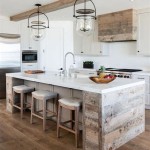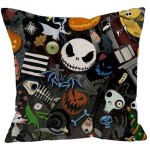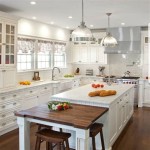How To Decorate Cakes At Home
Decorating a cake can transform a simple baked good into a centerpiece for any celebration. While professional cake decorating may seem daunting, achieving beautiful results at home is possible with the right tools, techniques, and a bit of practice. This guide outlines the essential steps and considerations for decorating cakes at home.
Essential Tools and Ingredients
Before beginning, gather the necessary tools and ingredients. Key tools include a turntable, offset spatulas in various sizes, piping bags and tips, a cake leveler or serrated knife, parchment paper, and a bench scraper. Essential ingredients include frosting (buttercream, cream cheese, or whipped cream), food coloring (gel or liquid), sprinkles, and any desired decorative elements like fondant or edible flowers.
Preparing the Cake
A level cake surface is crucial for seamless decoration. If the cake layers have a dome, use a cake leveler or serrated knife to create a flat top. For a multi-layered cake, ensure each layer is level before stacking. Torting, or splitting a cake layer horizontally to create thinner layers, can add height and enhance the presentation. Place a dollop of frosting on the cake board or serving plate to anchor the first layer.
Creating a Crumb Coat
A crumb coat is a thin layer of frosting that traps loose crumbs and creates a smooth surface for the final frosting layer. Apply a thin layer of frosting to the entire cake using an offset spatula, ensuring complete coverage. Chill the cake for approximately 30 minutes to allow the crumb coat to set.
Frosting the Cake
Once the crumb coat is set, apply the final layer of frosting. Using an offset spatula, apply a generous amount of frosting to the top of the cake and spread it evenly. For the sides, apply frosting in sections, using the offset spatula and bench scraper to create a smooth finish. Refrigerate the cake for another 30 minutes to allow the frosting to firm up.
Piping Techniques
Piping techniques add intricate designs and decorative elements to the cake. Fill a piping bag fitted with the desired tip with frosting. Common piping techniques include rosettes, shells, stars, and writing. Practice piping on parchment paper before applying designs to the cake. Consider using different piping tips to create varied textures and patterns.
Working with Fondant
Fondant is a sugar paste that can be rolled out and draped over cakes to create a smooth, professional finish. Knead the fondant until pliable, then roll it out to the desired thickness on a lightly dusted surface. Carefully drape the fondant over the cake and smooth it down the sides, trimming any excess. Fondant can also be used to create decorative elements like flowers, figures, and bows.
Adding Decorative Elements
Sprinkles, edible glitter, candies, fresh fruit, and edible flowers can add visual appeal and personality to a decorated cake. Strategically place these elements to enhance the design. Consider the color scheme and overall theme when selecting decorative elements.
Practicing and Experimenting
Cake decorating is a skill that improves with practice. Experiment with different frosting types, piping techniques, and decorative elements to discover preferred methods and styles. Start with simple designs and gradually progress to more complex decorations as confidence grows. Numerous online resources and tutorials offer inspiration and guidance for various skill levels.
Storing Decorated Cakes
Proper storage maintains the cake's freshness and appearance. Store cakes with buttercream or cream cheese frosting in an airtight container at room temperature or in the refrigerator, depending on the climate and ingredients used. Cakes decorated with whipped cream frosting should be refrigerated. Fondant-covered cakes can be stored at room temperature, away from direct sunlight and humidity.
Troubleshooting Common Issues
Common issues in cake decorating include cracking frosting, air bubbles in fondant, and uneven piping. Cracking frosting can be caused by dry cake layers or over-mixing the frosting. Air bubbles in fondant can be remedied by pricking them with a fine needle. Uneven piping can result from inconsistent pressure or improperly filled piping bags. Addressing these issues requires practice and attention to detail.
Resources for Further Learning
Numerous resources, including online tutorials, baking blogs, and cake decorating books, provide detailed instructions, tips, and inspiration. Exploring these resources can enhance skills and provide new ideas for cake decorating projects. Local baking supply stores often offer classes and workshops for hands-on learning.

5 Creative And Easy Ways To Decorate A Cake At Home Bakingo Blog

Melting Chocolate Cake Decorating Ideas How To Make At Home So Yummy Tutorials

11 Creative Ways To Decorate A Cake Other Than Frosting Bakingo Blog

11 Creative Ways To Decorate A Cake Other Than Frosting Bakingo Blog

How To Decorate Your First Cake Step By Sugar Geek Show

5 Easy Ways To Decorate Cakes Without Tools I Scream For Ercream

How To Decorate Cake With Biscuits Decoration

5 Creative And Easy Ways To Decorate A Cake At Home Bakingo Blog

How To Decorate A Cake Bettycrocker Com

How To Decorate A Cake For Beginners Sugar Spun Run
Related Posts







